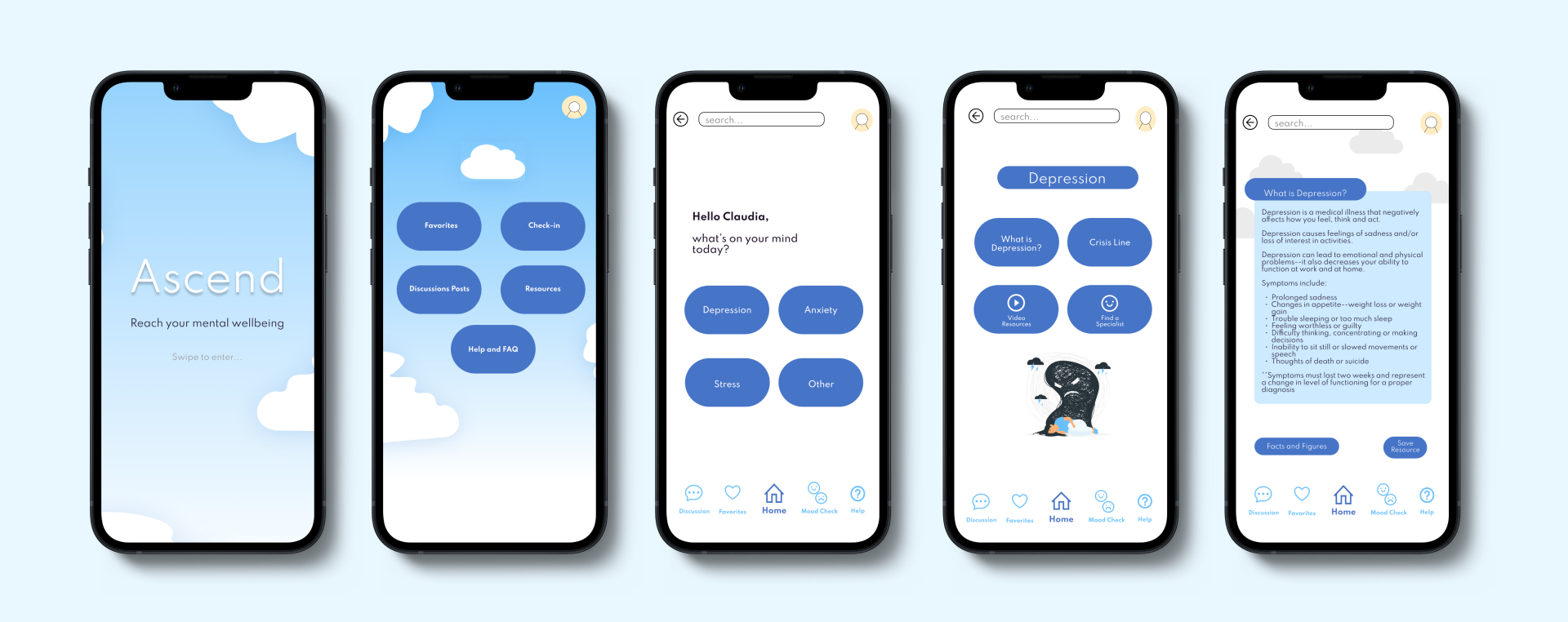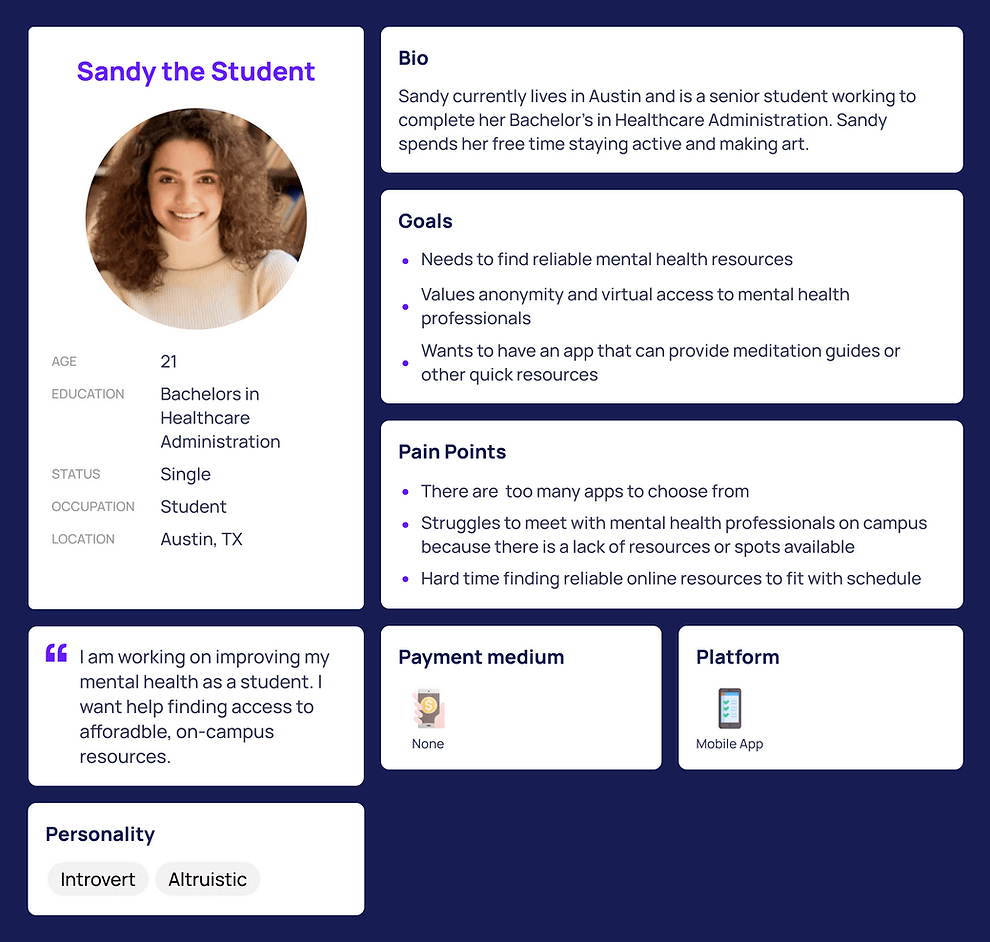Ascend: UX Project

Context: Ascend is the conceptual mobile application created for the UT Austin I 310U course (Introduction to User Experience Design).
Problem: The burden of mental illness on college and university campuses has exponentially grown after COVID-19. At UT Austin, the counseling centers have seen a 45% increase in students seeking services. Students are now referred to off-campus providers due to the campus' inability to meet every student's needs for help.
Solution: Providing students with local support and access to professionally developed resources accessed through this app.
Role: UX Designer
Duration: September 2021 - December 2021
Team: Chau N., Anakaren S., Isabel K.
Tools: Figma
User Research
We conducted interviews with individuals to understand more about their personal journey with mental health.
We conducted a total of 7 interviews
Ages range from 21 - 24
Backgrounds
Majority STEM students, but there was some variation in majors (Health Administration, Visual Arts)
The interviewees were mostly current enrolled students, some graduates
Gender distribution
3 boys, 4 girls
Participant Quotes
"A few years ago I didn't care too much about my mental health, now it's a priority."
— Participant 1
"People only reach out for help when they're at their lowest--there need to be lower barriers of entry to mental health."
— Participant 6
"I value my mental health, but sometimes I don't have the time to take extra care of it."
— Participant 2
"School, work, and my social life have higher importance to me--but I want to be able to find more time to take care of my mental health."
— Participant 7
User Personas
Based on our user research, we created two personas:
Sandy the Student - this individual has a good grasp on what their mental health needs are and knows how to access resources.
Kristin Watson - this individual does not know how to find or access resources and requires extra guidance.
Prototypes
-

Low-Fi
-

Mid-Fi
-

Hi-Fi
Final thoughts + Reflections
This was my first time doing a UX-related project and it was a large learning curve. I learned how to conduct user interviews, make prototypes, use Figma for the first time, as well as come up with final mock-ups for our presentation. Tackling a real-world problem and creating a design solution was a challenge for a first-time designer. However, the experience gave me more insight into designing on Figma.

